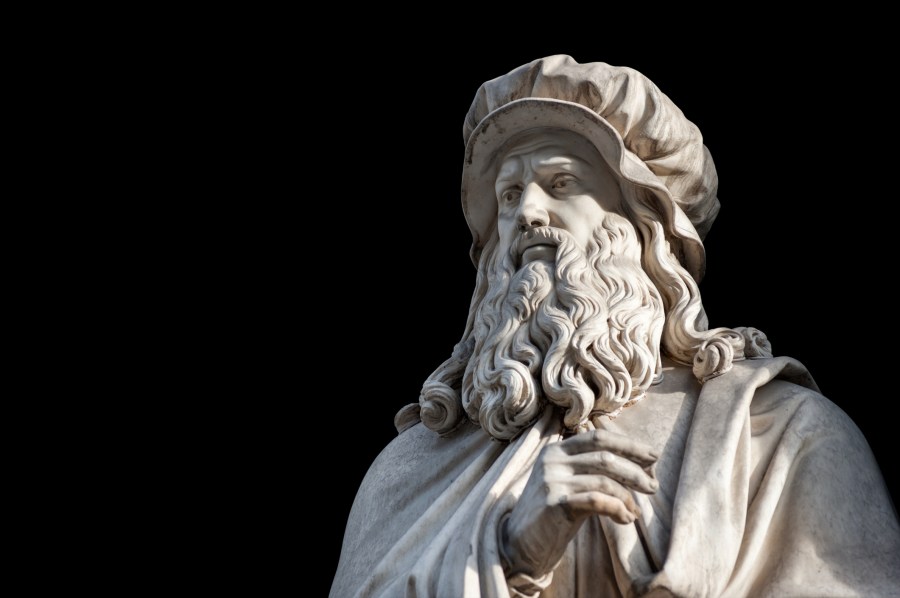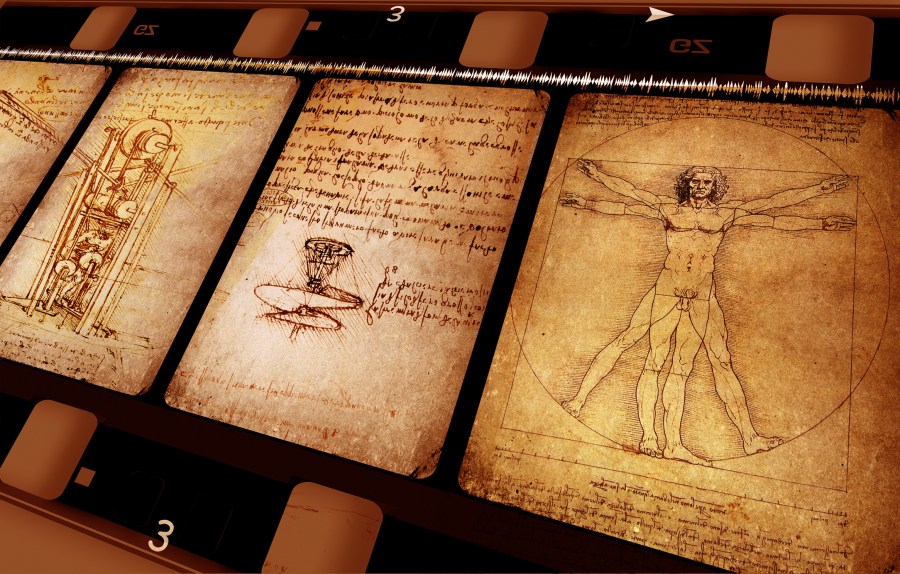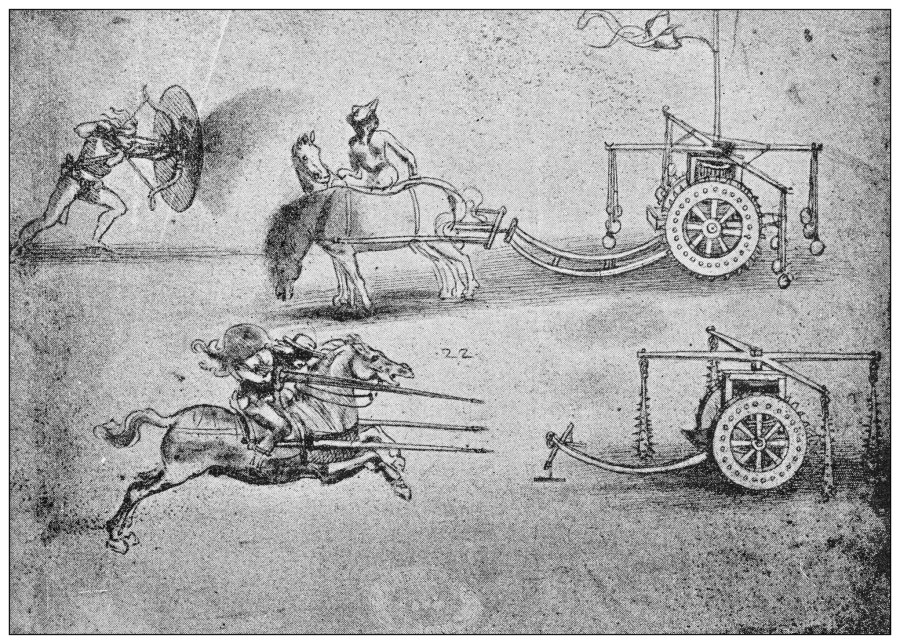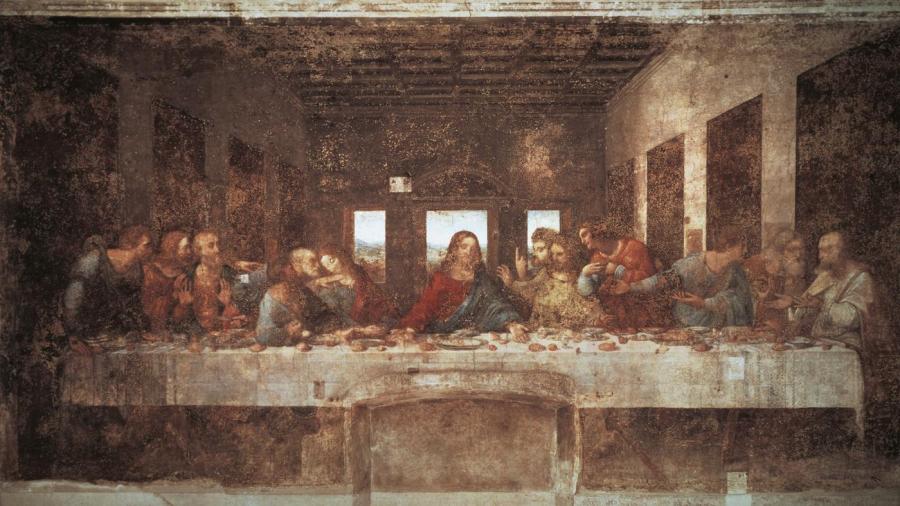Box In Metallo Da Giardino

Leonardo Da Vinci had a natural genius and fabricated important contributions beyond a number of fields. So alee of his times was he that his genius could not exist truly appreciated by his peers, though today information technology is easy to expect dorsum and recognize that da Vinci was the ultimate triple (maybe quadruple) threat. He was an incredibly talented painter. His scientific breakthroughs laid the pathway for some of today's most important inventions. His skilled architectural drawings continue to serve as blueprints for mod architects.
This ultimate Renaissance human being left an enduring mark on science and the arts. What made Leonardo Da Vinci so special? A journey into his life and legacy is certain to print.
Career
Surprisingly, Leonardo da Vinci never attended a school of higher didactics. Every bit a kid, he received a bones education from his male parent. And when he was a teenager, his father arranged for him to commence on an apprenticeship with a local artist, a well respected painter and sculptor. He learned under Andrea del Verrocchio well into machismo.
In his twenties, Leonardo da Vinci launched his own career in the arts. He was deputed in Florence to complete ii large paintings, only left both of them unfinished to move to Milan and serve the metropolis'due south duke. With the tools of the fourth dimension, huge projects like painting ceilings and building sculptures could have several years to complete. Frequently, he would be hired by another political party before he could finish work for the first person.
While apprenticeships and clan with the intelligent people of his solar day certainly helped to stimulate da Vinci's ideas, he was largely self-taught in a variety of disciplines. He studied anatomy to further his artistic chapters. His notebooks are filled with scientific observations of his time spent in nature and of his cadaver dissections. He studied h2o and had ideas for canals, steam-powered cannons and waterwheels. His introduction to the field of geometry did not happen until he was 30, and yet it lead to da Vinci's "Vitruvian Human being," which is a drawing of a human with his limbs outstretched within a square and a circle, shows his perceptions of geometrical proportion.

Although he was not always able to bring his ideas to fruition, much of da Vinci's work was centuries alee of its time. HIs notebooks reveal that he "invented" the bike, airplane, helicopter, and parachute long earlier these ideas were actualized. You might likewise say that he invented the robot, though he would not have been probable to call information technology that. But he did pattern a mechanical knight, that has been dubbed "Leonardo'south robot." A person could control the knight with gears and pulleys.
Although he spent most of his career working in the arts, da Vinci's incredibly detailed drawings were a massive contribution to the science of anatomy. He dissected everything from animals to humans, and some of his drawings rival the item of modern ones. Leonardo da Vinci even made drawings (these were not then authentic) of what he imagined a fetus to expect like within the womb.
Inventions
If Leonardo were alive today, he might work in biomimetics. This is a co-operative of scientific discipline where engineers and inventors use the natural world as a blueprint for their inventions. Da Vinci was famous for drawing upward plans for so-called flying machines. His inventions had some similarities to modern aviation, but their design was, in some ways, much more whimsical.

Some of his inventions could have never withstood the test of bodily flying, just others were remarkably well designed. Da Vinci could not always test out his ideas because he did not have the time and resource to build them.
How was an untrained inventor in the 1400s able to design a helicopter that could actually wing? He took notes from the adept design of the bat. Without having the tools to see the inner workings of the bat, he noticed the unique way in which these not and then aerodynamic animals glide beyond the sky. One of Da Vinci's most famous flying inventions was a design chosen the ornithopter.
He designed the car based on the webbed wings of a bat. (The idea for this kind of flight machine may have been invented centuries before, but Da Vinci's designs were the most detailed and famous.) A pilot would lay downward on their stomach to fly the machine, and the airplane pilot could control the wings with his arms. The contraption also had a stabilizing tail-like protrusion on the dorsum. Although the design could have remained airborne, at least in theory, the feat would have been to find a strong pilot to go along the vast wood and silk wings in move. Today, people still fly tiny model ornithopters, not meant for humans to ride on, for fun.
Paintings
By far, ii of Leonardo da Vinci's most famous paintings are Mona Lisa and The Final Supper. The Mona Lisa remains proudly displayed in the Louvre Museum of Paris, France. Some believe this painting is actually a portrait of a merchant's wife named Lisa Gherardini. The adult female's slight smiling in the painting is and so well known that it has get the namesake of the term Mona Lisa smile.

The Last Supper is a religious painting. Information technology depicts the moment when Jesus told his apostles that one of them would soon betray him. Millions of Christians display prints of this painting in their homes, and people from all faiths love to run across da Vinci's skill at constructing a scene. Today, the original lies in the Convent of Santa Maria delle Grazie in Milan, Italy. It took da Vinci three years to paint this on the stone walls of the convent.
His excellence in architecture and anatomy served the realism way of painting that he frequently subscribed to. The people and scenes that da Vinci crafted so many centuries ago continue to make art lovers feel like they take portals to a forgotten world. Leonardo da Vinci's work is also known for his frequent use of a geometrical concept called the Golden Ratio.
With and then many accomplishments in so many fields, we can give thanks for laying the groundwork for countless essential modern inventions. Without the contributions of da Vinci, the fields of art, architecture, aviation, and science would be very unlike today.
Box In Metallo Da Giardino,
Source: https://www.reference.com/history/contributions-leonardo-da-vinci?utm_content=params%3Ao%3D740005%26ad%3DdirN%26qo%3DserpIndex&ueid=c9501a0d-954d-4ed6-bb41-92f5a84d4401
Posted by: gibsonyessund.blogspot.com


0 Response to "Box In Metallo Da Giardino"
Post a Comment